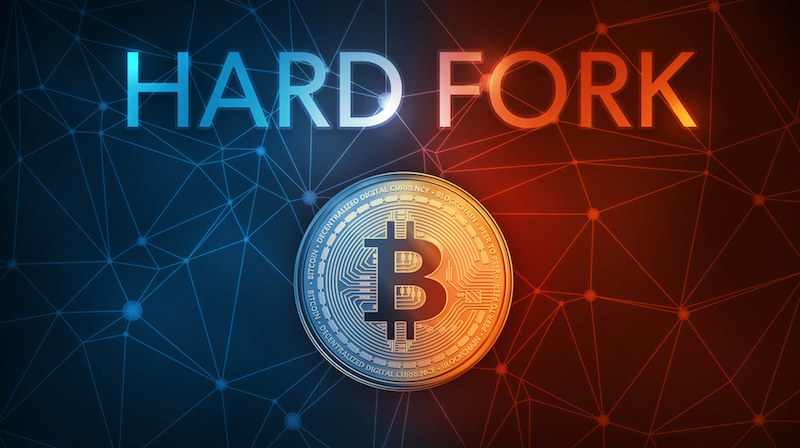Imagine a road splitting into two separate paths.
That's kind of what a Bitcoin hard fork is – it creates a new, separate version of the Bitcoin blockchain. But why do these splits happen? This article explains what a hard fork is, the reasons behind them, and how they impact the Bitcoin world.

At its core, a cryptocurrency like Bitcoin relies on a technology called blockchain. Imagine a digital ledger, like a shared notebook, where every transaction is recorded as a "page" called a "block." These blocks are chained together chronologically, creating a secure and transparent record of all transactions. Everyone in the network has a copy of this ledger, making it incredibly difficult to tamper with the data. A "fork" occurs when this shared ledger splits into two separate versions. This can happen accidentally, like when two miners simultaneously create a block, or intentionally, due to changes in the software's rules.
A "hard fork" is a specific type of fork that represents a significant and permanent change to the blockchain's rules. It's like a major software update that's incompatible with previous versions. Imagine if half the users of a word processor updated to a new version with completely different formatting rules; those using the old version would no longer be able to open or edit documents created with the new version. This is analogous to a hard fork. The key difference between a hard fork and a "soft fork" is compatibility. In a soft fork, the changes are backward-compatible, meaning old software can still interact with the new chain, albeit with limited functionality. A hard fork, however, creates a permanent divergence.
So, how does a hard fork actually work? It starts with a proposal for change, often discussed and debated within the cryptocurrency community. If a consensus is reached, developers create new software that implements these changes. Users running the original blockchain software then have a choice: upgrade to the new version or continue using the old one. If a significant portion of the network upgrades, the blockchain splits into two separate chains, each following its own set of rules. This split can effectively create a new cryptocurrency. For instance, if you held Bitcoin before a hard fork, you would then own an equivalent amount of the new cryptocurrency created by the fork.
Why do these hard forks happen? There are several key reasons. One common reason is to improve the underlying technology, such as increasing transaction speed, enhancing security, or adding new functionalities. Another reason is disagreement within the community about the future direction of the cryptocurrency. If different groups have conflicting visions, a hard fork can be a way for them to pursue their separate paths. In some rare cases, hard forks have been used to address critical issues like reversing the effects of a hack or exploit. Finally, a hard fork can be used to launch a completely new cryptocurrency, leveraging the existing blockchain's history but with different features or goals.
Bitcoin itself has experienced several notable hard forks. One of the most prominent examples is the creation of Bitcoin Cash (BCH) in 2017. This fork stemmed from a disagreement about block size, with the Bitcoin Cash community advocating for larger blocks to increase transaction throughput. Another example is Bitcoin SV (BSV), which further split from Bitcoin Cash due to continued disagreements. These examples illustrate how differing opinions within a cryptocurrency community can lead to significant changes in the blockchain's structure and even the creation of new cryptocurrencies.
After a hard fork, there are effectively two separate blockchains and, potentially, two separate cryptocurrencies. The value of each cryptocurrency is then determined independently by market forces. The community may also become divided, with different groups supporting different chains. It's important to differentiate hard forks from soft forks. While both represent changes to the blockchain's rules, soft forks are backward-compatible, meaning older software can still interact with the updated chain. Hard forks, on the other hand, create a permanent split, requiring users to upgrade to participate in the new chain.
In conclusion, a hard fork is a significant event in the life of a cryptocurrency. It represents a fundamental change to the blockchain's rules, potentially leading to the creation of new cryptocurrencies and divisions within the community. While they can be complex, understanding the basic concept is crucial for anyone interested in the world of cryptocurrencies. They demonstrate the dynamic and evolving nature of these decentralized systems.
credits : cover image- investopedia